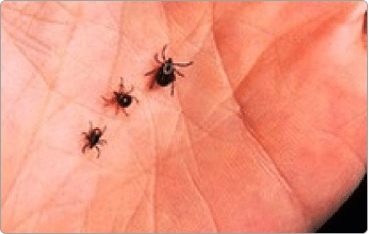
The brown dog tick (Rhipicephalus sanguineus) is the common tick that is found on our dogs (cats are not affected by ticks) in Singapore. The presence of ticks is extremely annoying to both pets and their owners.
The tick has harpoon-like barbs at its mouth to sink into the host's skin for feeding. This can cause severe pain and itch for the affected dog. It has crab like legs (adult ticks has 4 pairs of legs) and produces sticky secretion that help to hold itself to the host.
The adult female tick can lay up to 1500-3000 eggs after feeding on a dog's blood. She will lay eggs in the cracks and crevices of your walls, ceilings or furniture. Sometimes you will even see the pregnant female ticks crawling up the wall, making her way to lay her eggs!
Tick infestation will cause mild to severe skin irritation and fur loss. As the dog scratches itself, secondary bacterial dermatitis may lead to pimples, skin scabs and intense redness to the skin. Ticks love to lodge themselves in dark skin folds like in between the toes, behind the ears and even in the ear canals.
Ticks may carry infectious organisms that can transmit diseases to the host as they bite and suck blood. Thankfully, the brown dog tick does not carry any danger to human.
The complete eradication of ticks requires expertise and thorough treatments. MAJOR's offers a two-step, two-in-one treatment programme. A combination of adulticide chemicals and an Insect Growth Regulator is applied on affected areas via an Ultra-Low Volume (ULV) mist. The microscopic mist particles easily penetrate inaccessible areas including crevices, cracks in the wall, false ceilings and upholstery. Further to this, a targeted aerosol treatment is carried out at the areas where ticks are found. The combination treatment eliminates adult ticks whilst impeding the growth of the nymphs. About 14 days later, a second follow up treatment targets remaining ticks which survived the first purge. It is also targeted at the nymphs that may have hatched after the 1st treatment. Thus, the thoroughness of MAJOR's two-step treatment programme largely helps in preventing recurring infestations. Sending the dog for deticking prior to the treatment is recommended.


